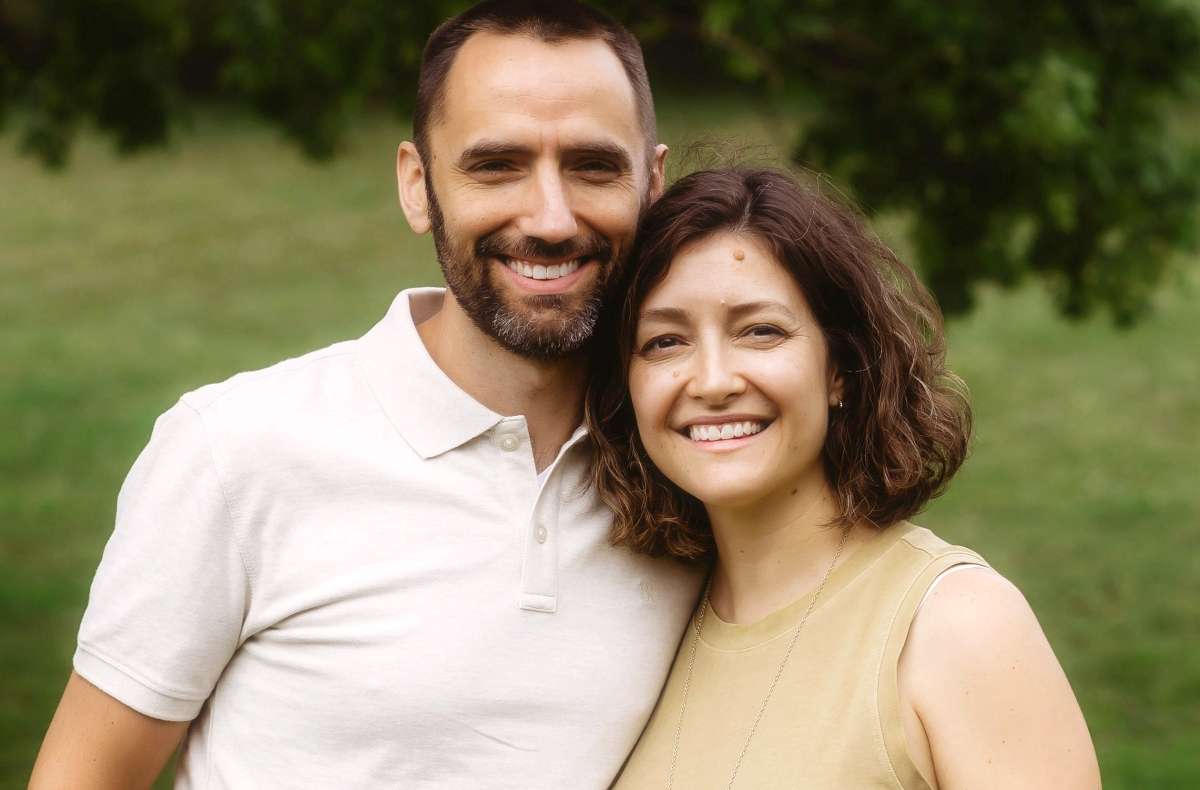Inspired by WHD: Sara Marks and Tim Julian
March 8, 2023

Former WHD researchers Sara Marks and Tim Julian work at the Swiss Federal Institute of Aquatic Science and Technology, a research institute known as Eawag. Sara is focused on water supply technologies applicable to the development sector, while Tim is an environmental microbiologist. At Stanford, Tim worked with WHD-affiliated researchers Alexandria Boehm and James Leckie, while Sara worked with WHD Director Jenna Davis. After completing doctoral research, Tim left Stanford in 2010, and Sara left in 2012.
Below, Sara and Tim discuss their career trajectories, advice for current Stanford students, and more.
What were some of the most valuable aspects of your time at Stanford?
Tim: Critical evaluation is something that's really promoted at Stanford. Receiving and giving it is something that I found valuable. It’s about always questioning the evidence and making sure that what you're doing is the right thing. Something that I learned at Stanford is that you can follow what you think is the most important. When you have a job like this that you're passionate about and interested in, it can bleed over into the rest of your life. Finding that balance is a challenging thing.
Sara: I had more time, in a way, to dig into some of the skills that I began at Stanford around statistical analysis and the theory of research design. There were just so many valuable classes that I took that I still reference, still use in my own teaching. The standard is high at Stanford. It's really a pleasure to carry that forward into our job, and help our students see that you can both do applied research that is practical, but also have high enough quality to be published in top journals.
Did your experience at Stanford enhance or change your career plans in any way?
Sara: In every way possible. I didn't realize how unique it was that the Poop Group really created a research partnership with actors on the ground. So I mean, just the principle of action research or applied research where you're beginning with environmental problems. It has shaped my perspective fundamentally, and it's the basis of my research group today. We try to put in practice a guiding framework for how partnership around development and research should follow. This involves early discussion, equal partnership and equal decision-making, among other things. A lot of those principles began at Stanford and with Jenna’s guidance.
What's your career path been like since leaving Stanford? Where has your job taken you?
Tim: Being at Stanford, and particularly the intersection of what Ali was doing, and Jim and Jenna, I became really interested in public health and microbiology. And so I went to do my postdoc at Johns Hopkins School of Public Health. We both did. And then, through that public health, microbiology aspect, and linking with environmental health, that's what I think helped position us for the Eawag jobs.
What advice would you give to current Stanford students?
Sara: I had a piece of advice given to me early on, and it still holds true: don't rush your time at Stanford. You want to make sure you hit those milestones and graduate, but it's such a special place and time. If you have the opportunity to take a class just out of curiosity, do it.
Tim: Now is the time that you have to go deep into what you're doing and really understand the methods underlying everything because later things just get more hectic. If you follow the academic path, you get a postdoc, and that comes with more responsibility. And then you just keep going up, you have less time to focus on your topic. But my other piece of advice is to have fun. Enjoy it.
Contact Information
Rob Jordan
Associate Editor, Environment and Sustainability, Woods Institute
rjordan@stanford.edu


